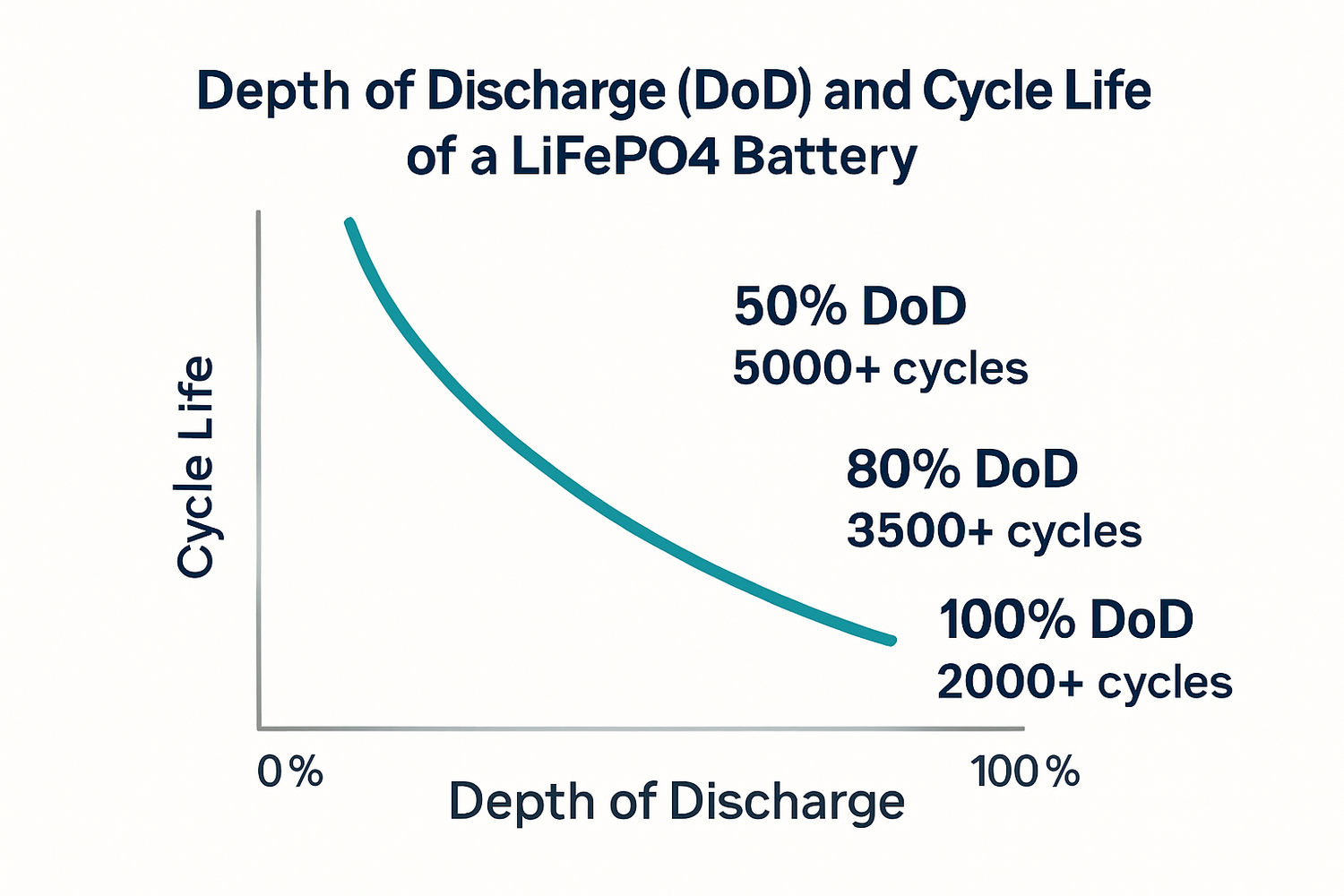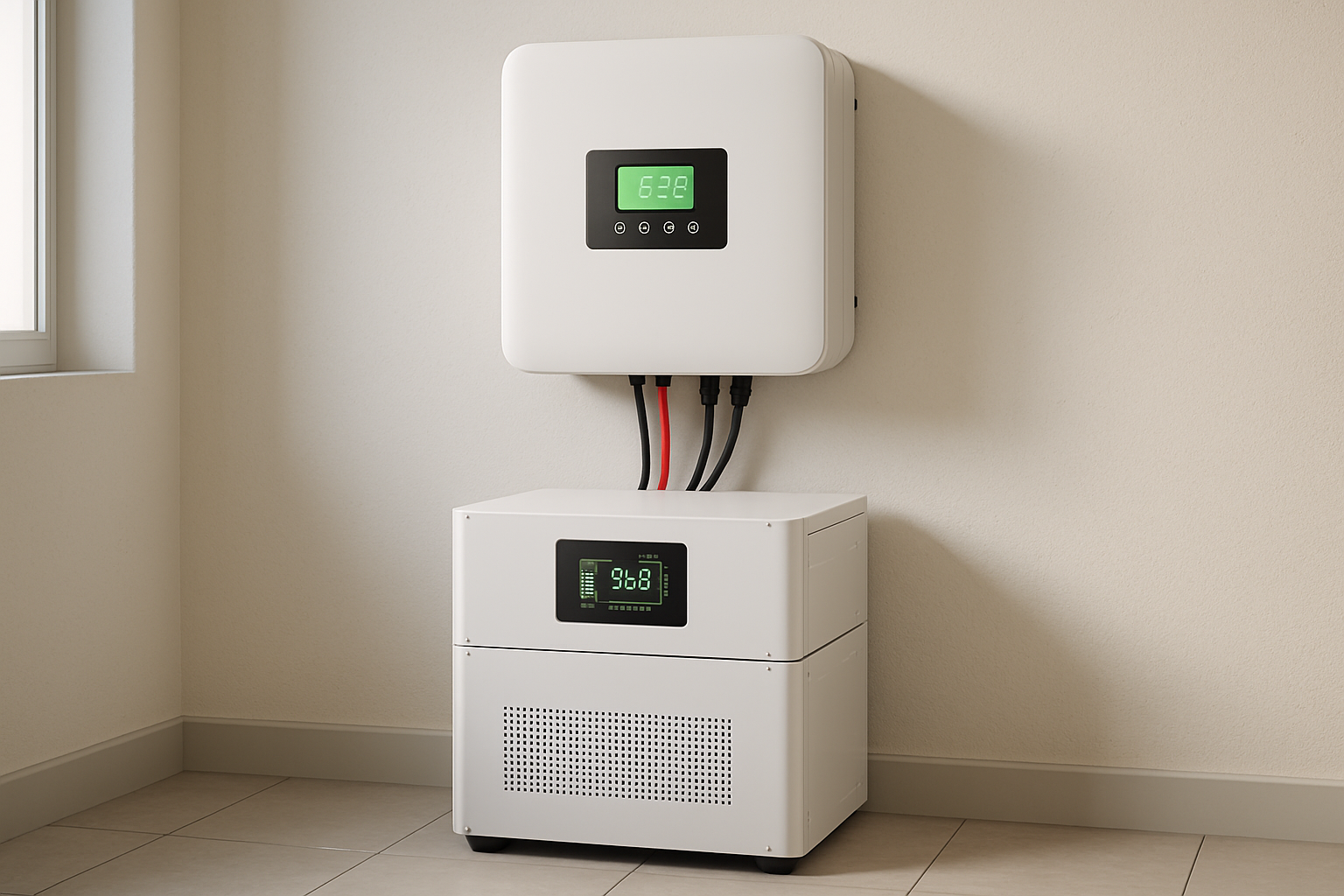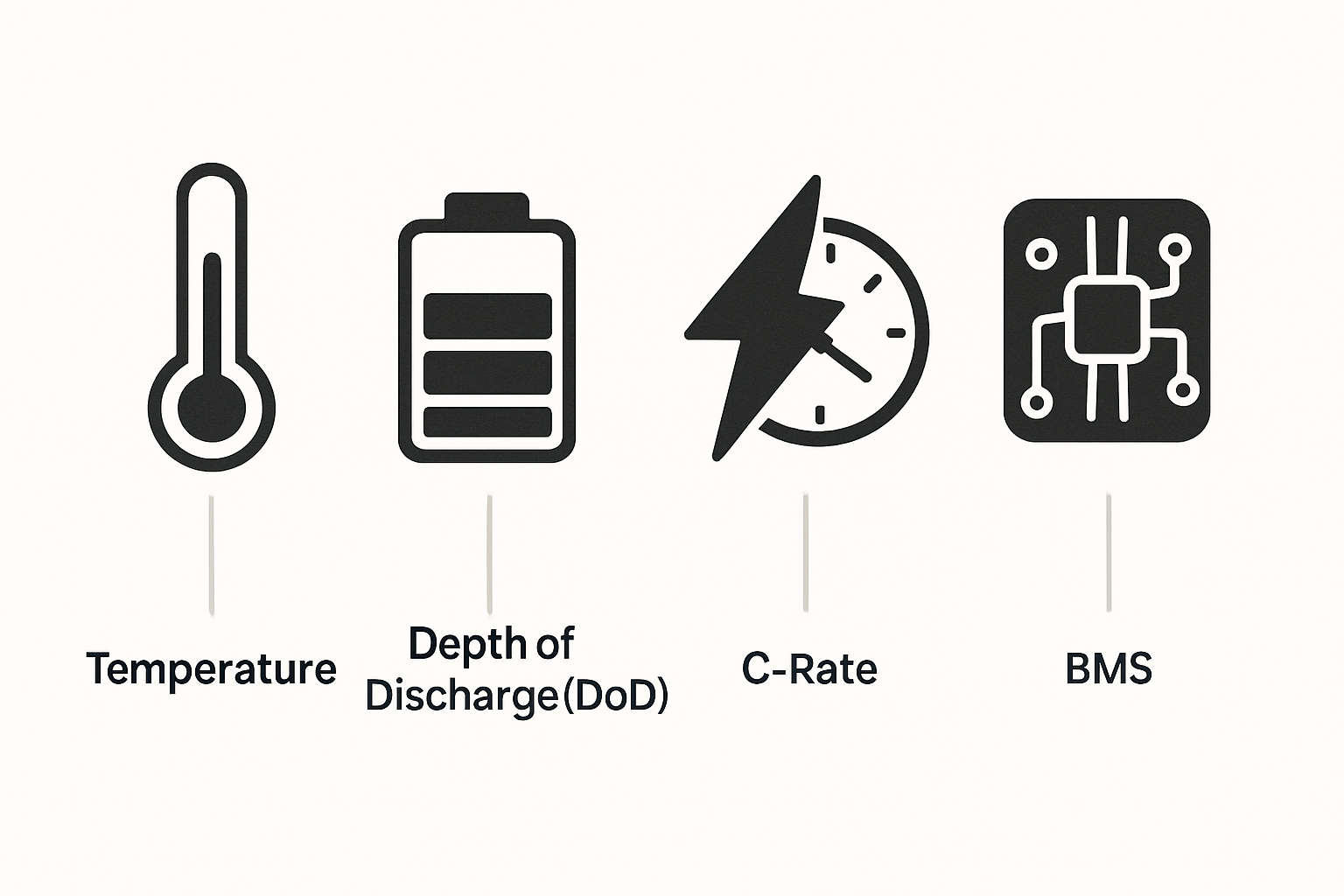Lithium iron phosphate (LiFePO4) batteries are central to modern solar and energy storage solutions, known for their impressive longevity and safety. Achieving their full potential, however, depends entirely on how they are managed. Proper care is not just about maintenance; it is a strategy to maximize your energy investment. This guide provides clear, actionable steps to ensure your LiFePO4 battery operates at peak performance for years to come.
Understanding the Pillars of LiFePO4 Battery Health
Effective battery management starts with understanding the core principles that govern its lifespan and performance. The unique chemistry of LiFePO4 batteries sets them apart, but their longevity is still tied to how they are used and protected.
The Chemistry Advantage: Why LiFePO4 is Different
The key to the LiFePO4 battery's stability lies in its strong molecular bonds within the crystal structure. This makes it inherently safer and more durable than other lithium-ion chemistries. It is less prone to thermal runaway and can withstand thousands of charge and discharge cycles, forming the foundation of a reliable energy storage system.
Key Metrics: Cycle Life and Depth of Discharge (DoD)
A 'cycle' refers to one full charge and discharge. Depth of Discharge (DoD) is the percentage of the battery's capacity that has been used. These two metrics have an inverse relationship: the shallower the average discharge, the more cycles the battery can endure. For example, a battery consistently discharged to only 50% DoD will last significantly longer than one regularly drained to 90%. While LiFePO4 batteries can handle deep discharges, avoiding them extends their operational life.
| Depth of Discharge (DoD) | Estimated Cycle Life |
|---|---|
| 100% | 2,000 - 3,000+ |
| 80% | 3,500 - 5,000+ |
| 50% | 5,000 - 8,000+ |
| 20% | 10,000+ |
The Role of the Battery Management System (BMS)
The Battery Management System (BMS) is the battery's onboard computer. It is a critical component that protects the cells from operational stress. A quality BMS prevents over-charging, over-discharging, and exposure to unsafe temperatures. It also ensures all cells in the battery pack are balanced, meaning they maintain an equal state of charge. This balancing act is crucial for both performance and longevity.
Strategic Charging: The Foundation of Longevity
How you charge your LiFePO4 battery has a direct impact on its health. Implementing smart charging protocols reduces stress on the cells and is one of the easiest ways to extend lifespan.
Optimal Voltage and Current Settings
Using a charger designed specifically for LiFePO4 chemistry is non-negotiable. For a 12V battery, the recommended charge voltage is typically between 14.2V and 14.6V. Equally important is the charging rate, or current. A gentle charge at a rate of 0.2C to 0.5C (where 'C' is the battery's capacity in amp-hours) is preferable to rapid charging. Slower charging generates less heat and places less strain on the battery's internal components.
The Myth of 'Full' Charges
Unlike older battery technologies, LiFePO4 batteries do not need to be fully charged regularly. In fact, consistently charging to 100% can slightly accelerate aging. For daily use, charging to around 90-95% of capacity is a simple and effective way to prolong battery life. A full 100% charge can be performed periodically (e.g., once a month) to help the BMS re-calibrate and balance the cells.
Temperature's Critical Impact on Charging
Temperature is a crucial factor. The ideal charging temperature range is between 0°C and 45°C (32°F to 113°F). Attempting to charge a LiFePO4 battery in freezing temperatures can cause permanent damage due to a phenomenon called lithium plating. A high-quality BMS will include a low-temperature cutoff to prevent this. Similarly, charging in extreme heat accelerates cell degradation.
Intelligent Discharging for Sustained Performance
Just as important as charging, your discharging habits determine how well the battery performs over its lifetime. Managing loads and avoiding excessive strain are key.
Avoiding Deep Discharges
While LiFePO4 batteries are robust, consistently draining them completely should be avoided. Aim to keep the state of charge between 20% and 80% for daily operation. This practice of maintaining a moderate state of charge significantly increases the number of available cycles.
Managing High-Demand Loads
LiFePO4 batteries can deliver high currents, but sustained high-power draws generate heat and stress the cells. Whenever possible, manage your energy usage to avoid sharp, prolonged spikes in power demand. Staggering the use of heavy appliances in an off-grid or solar storage system can reduce the peak load on the battery, contributing to better long-term health.
The Importance of System Sizing
Properly sizing your battery bank is fundamental. An undersized battery will be subjected to frequent deep discharges and high discharge rates, both of which shorten its life. Ensuring your system is designed to meet your energy needs prevents this chronic stress. For a detailed analysis of how different components interact, the ultimate reference on solar storage performance offers valuable data on optimizing your entire setup.
Long-Term Storage and Maintenance Practices
If you need to store your battery for an extended period, a few simple steps will preserve its health. Proper storage conditions prevent irreversible capacity loss.
Ideal Storage Conditions
For long-term storage (over a month), it is best to keep the battery at a state of charge between 50% and 70%. Store it in a cool, dry place, ideally between 10°C and 25°C (50°F and 77°F). Avoid locations with extreme temperature fluctuations. Disconnect the battery from any loads or chargers to prevent parasitic drain.
Periodic Health Checks
Even with a low self-discharge rate, it is good practice to check the battery's voltage every 3-6 months. If the state of charge has dropped significantly, perform a brief top-up charge to bring it back to the ideal storage level. This simple check ensures the battery remains healthy and ready for use when you need it again.
A Holistic View of Battery Health
Maximizing the life of your LiFePO4 battery is not about a single action but a comprehensive strategy. The principles of smart charging, intelligent discharging, temperature management, and reliance on a quality BMS all work together. By adopting these best practices, you ensure your battery delivers reliable power for its entire projected lifespan, providing a greater return on your investment in energy independence. As noted by the International Energy Agency (IEA), battery storage is a critical and fast-growing technology for the clean energy transition, making proper care more important than ever.
Frequently Asked Questions
How often should I fully charge my LiFePO4 battery?
A full 100% charge is not required on a daily basis. Performing a full charge once a month can be beneficial for cell balancing and BMS calibration. For regular use, charging to 90-95% is often better for maximizing the battery's lifespan.
Can I use a lead-acid battery charger for a LiFePO4 battery?
This is not recommended. Lead-acid chargers use different charging profiles, including equalization stages with high voltages that can permanently damage LiFePO4 cells. Always use a charger specifically designed for LiFePO4 chemistry to ensure safety and performance.
What is the single most important factor for extending LiFePO4 battery life?
While many factors are important, managing temperature is one of the most critical. Avoiding exposure to extreme heat and, especially, charging in freezing conditions will have a profound positive impact on the battery's long-term health and capacity retention.





Leave a comment
All comments are moderated before being published.
This site is protected by hCaptcha and the hCaptcha Privacy Policy and Terms of Service apply.